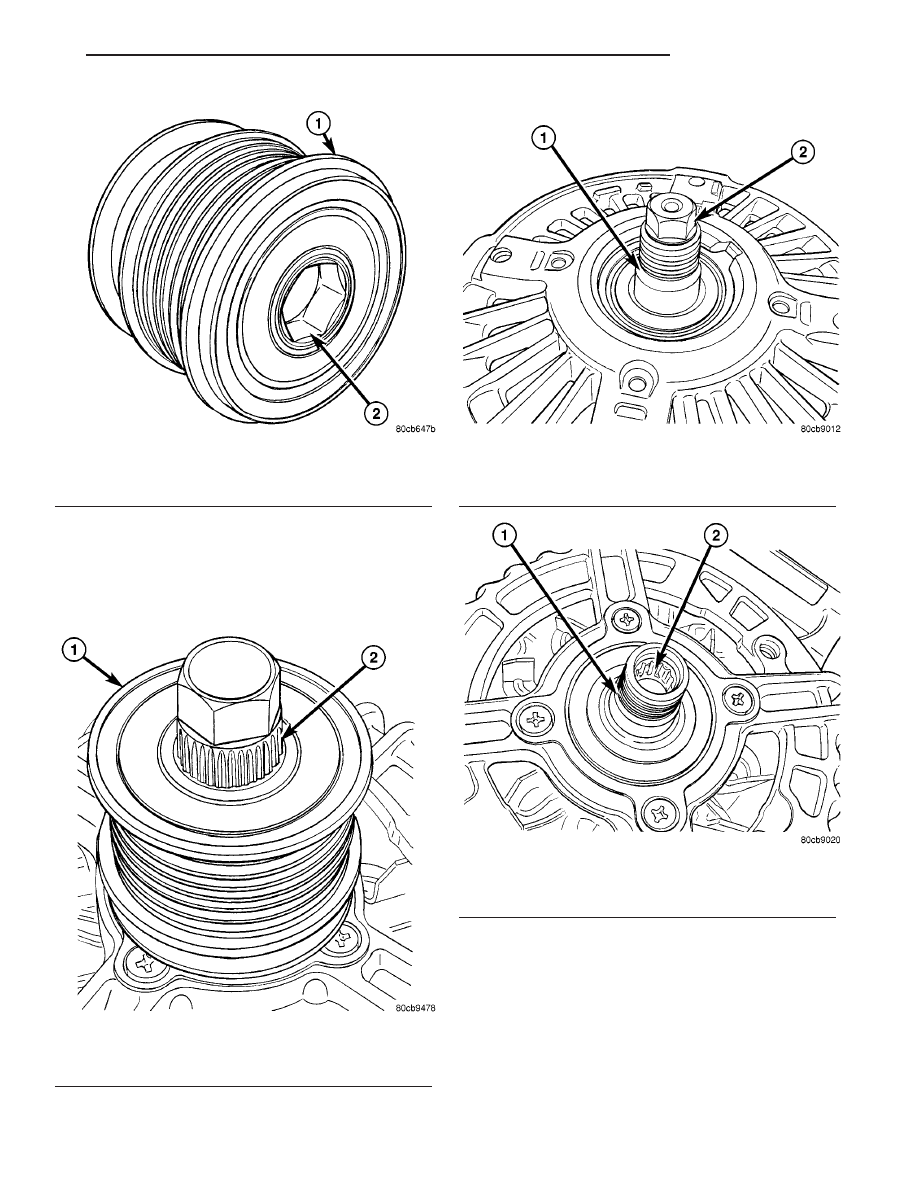Jeep Wrangler TJ. Manual - part 286

(5) The generator shaft uses conventional right-
hand threads to attach decoupler. To break decoupler
loose from generator threads, rotate end of tool clock-
wise (Fig. 13) or, (Fig. 14).
(6) After breaking loose with tool, unthread decou-
pler by hand from generator.
Fig. 9 GENERATOR DECOUPLER PULLEY (LITENS)
1 - DECOUPLER (LITENS)
2 - HEX OPENING
Fig. 10 #8823 TOOL AND INA DECOUPLER
1 - INA DECOUPLER
2 - TOOL #8823 (VM.1048)
Fig. 11 END OF GENERATOR SHAFT (HEX)
1 - GENERATOR SHAFT
2 - HEX
Fig. 12 END OF GENERATOR SHAFT (SPLINED)
1 - GENERATOR SHAFT
2 - SPLINES
TJ
CHARGING
8F - 27
GENERATOR DECOUPLER PULLEY (Continued)